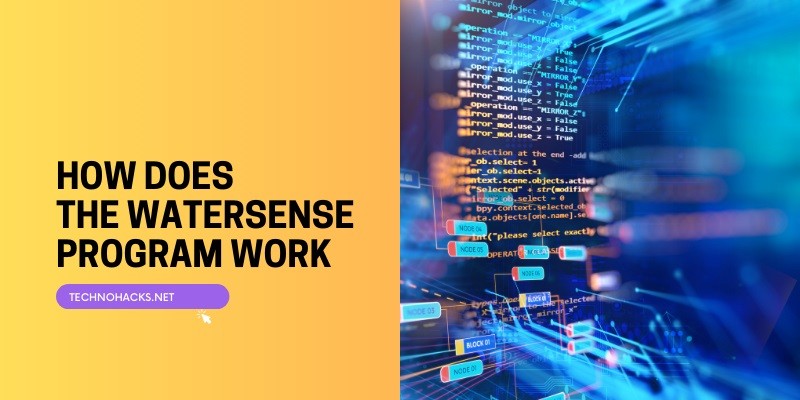How Does The WaterSense Program Work?
The WaterSense program, sponsored by the U.S. Environmental Protection Agency (EPA), is a voluntary partnership initiative designed to promote water efficiency and conservation across the United States. Launched in 2006, WaterSense aims to protect the nation’s water supply by offering consumers and businesses simple ways to reduce water consumption through water-efficient products, homes, and services.
Program Objectives
WaterSense has three primary objectives:
- Water conservation and efficiency: The program encourages the use of water-efficient products and practices to reduce overall water consumption.
- Consumer education: WaterSense provides resources and information to help consumers make informed choices about water use and conservation.
- Market transformation: By promoting water-efficient products and services, WaterSense aims to shift the market towards more sustainable water use practices.
Key Components of the WaterSense Program
Product Labeling
At the core of the WaterSense program is its product labeling system. Products that earn the WaterSense label have been independently certified to be at least 20% more water-efficient than standard models while maintaining equal or superior performance. The WaterSense label helps consumers easily identify water-efficient products in the marketplace.
Products eligible for WaterSense labeling include:
- Residential and commercial toilets
- Bathroom faucets and accessories
- Urinals
- Showerheads
- Irrigation controllers
- Spray sprinkler bodies
Partnerships
WaterSense relies on a network of partners to promote water efficiency and the WaterSense brand. These partners include:
- Manufacturers
- Retailers
- Utilities
- Builders
- Irrigation professionals
- Promotional partners
Partners play a crucial role in educating consumers, promoting WaterSense-labeled products, and implementing water-efficient practices in their respective industries.
Certification and Testing Process
To ensure the integrity of the WaterSense label, products must undergo a rigorous certification and testing process:
- Manufacturers develop products that meet WaterSense specifications.
- Products are tested by independent, third-party certifying bodies.
- Certified products are allowed to bear the WaterSense label.
This process ensures that WaterSense-labeled products consistently meet the program’s standards for water efficiency and performance.
Consumer Education and Outreach
WaterSense provides a wealth of educational resources and outreach initiatives to help consumers understand the importance of water conservation and how to implement water-saving practices. These efforts include:
- Online resources and tips for water conservation
- Awareness campaigns such as “Fix a Leak Week”
- Partnerships with utilities and organizations to promote water efficiency
- The WaterSense Current newsletter, which provides updates on program news and water-saving tips
The WaterSense Label
The WaterSense label is the program’s most visible and recognizable component. To earn the label, products must:
- Be at least 20% more water-efficient than standard models
- Meet strict performance criteria
- Provide measurable water savings results
- Achieve water efficiency through several technology options
Partnership Program
WaterSense partners are crucial to the program’s success. They serve as ambassadors, promoting water efficiency and WaterSense-labeled products, homes, and programs. Partners benefit from:
- Access to WaterSense resources and promotional materials
- Opportunities for recognition and awards
- Networking with other water efficiency professionals
- The ability to use the WaterSense partner logo
WaterSense Labeled Homes
In addition to product labeling, WaterSense has expanded to include a home certification program. WaterSense-labeled homes are designed to use at least 20% less water than standard new construction. The program specifies criteria for:
- Indoor water use (e.g., efficient fixtures and appliances)
- Outdoor water use (e.g., water-efficient landscaping)
- Homeowner education on proper water management
Professional Certification Programs
WaterSense also offers certification programs for irrigation professionals. These programs ensure that professionals in the irrigation industry are trained in water-efficient practices and technologies. Certified professionals can help homeowners and businesses design, install, and maintain water-efficient irrigation systems.
Impact and Achievements
The WaterSense program has made significant strides in water conservation since its inception:
- Through the end of 2023, WaterSense has helped Americans save a cumulative 8.7 trillion gallons of water.
- The program has saved consumers $207 billion in water and energy bills.
- WaterSense-labeled products have saved 880 billion kilowatt-hours of electricity through 2022.
- The use of WaterSense-labeled products has eliminated 337 million metric tons of greenhouse gas emissions.
These achievements demonstrate the program’s effectiveness in promoting water conservation and efficiency across the United States.
Consumer Benefits
By choosing WaterSense-labeled products and implementing water-efficient practices, consumers can:
- Reduce their water bills
- Lower their energy costs (due to reduced hot water usage)
- Decrease strain on water resources and infrastructure
- Contribute to environmental conservation efforts
For example, replacing old, inefficient toilets with WaterSense-labeled models can save the average family 13,000 gallons of water and $130 in water costs per year.
Conclusion
The WaterSense program works by creating a comprehensive system that encourages water efficiency through product labeling, partnerships, consumer education, and professional certification. By setting high standards for water-efficient products and practices, WaterSense has successfully transformed the market and consumer behavior towards more sustainable water use.

